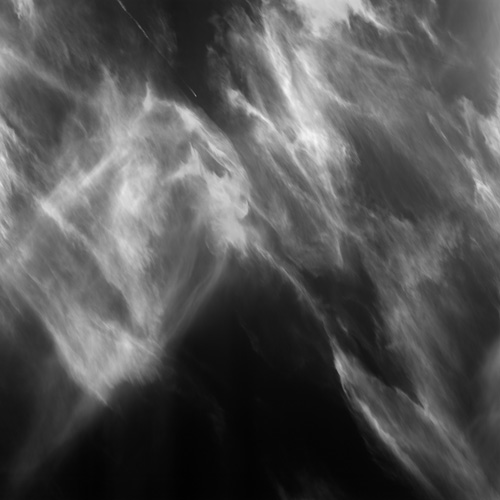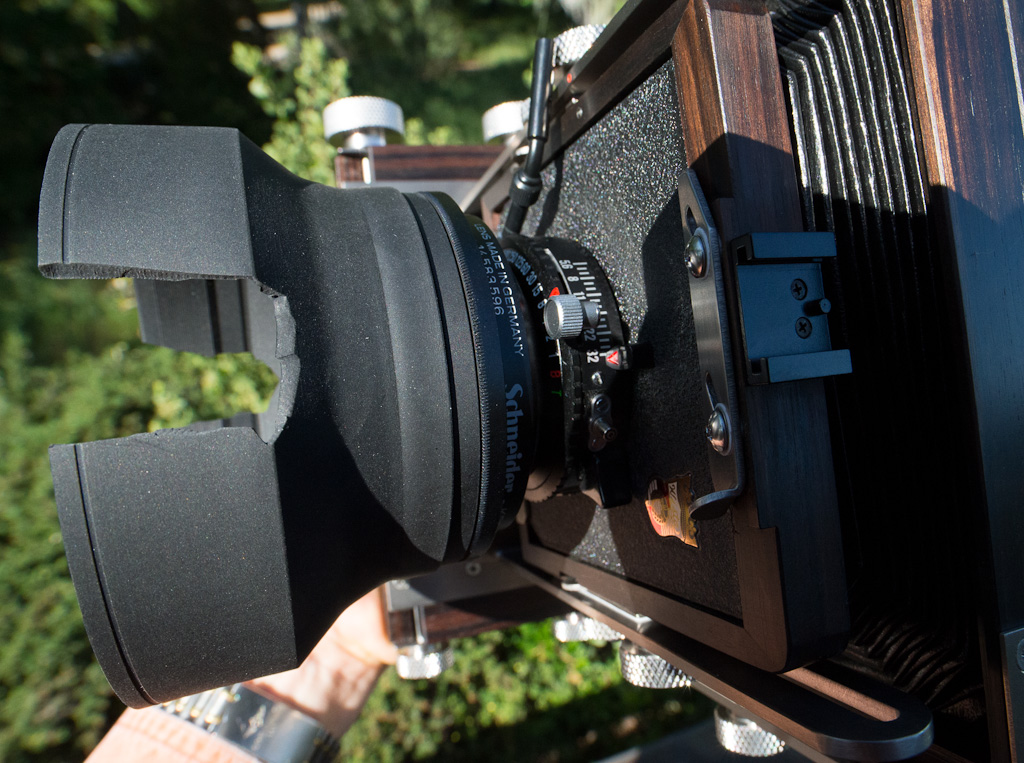Last night, I made some infrared slit scan photographs of a spectacular high cirrus formation, using a 47mm lens and my new lens hood (see previous post). Time runs from right to left. Each exposure was about half an hour long.
Fighting flare in slit scan photographs
When they’re using film, view camera photographers don’t need lens hoods. They only need to shade the lens at the instant of exposure, and the perfect implement to do that is right at hand: the dark slide they just pulled out of the film holder. When you’re making slit scan images, where the exposures can… [Read More]
Filter frustration
The slit scan photography that I’m now doing requires that I use, at various times, three different filters: infrared pass, infrared block, and polarizing. The lenses I’m using for the series – 65 mm, 75 mm, 90 mm, 135 mm, and 210 mm – all take different filters. Some of the filters that I need… [Read More]
Nikon D4 summary
The Nikon D3 was a breakthrough camera, offering noise levels and ISO settings that hadn’t ever been simultaneously approached. Two years later, the D3s raised the bar somewhat, offering better ergonomics for the live view feature, and providing slightly better high ISO performance. The difference between the D4 and the D3s is larger than the… [Read More]
Rube Goldberg photography
I have owned a few pieces of photography equipment that, at least in retrospect, seem to be incredibly overcomplicated, have bizarre human interfaces, or demand extreme patience from the photographer. I’ve used some processes that meet the same criteria. In this post, I’ll take a trip down memory lane. Do any of you have similar… [Read More]
- « Previous Page
- 1
- …
- 503
- 504
- 505
- 506
- 507
- …
- 577
- Next Page »

